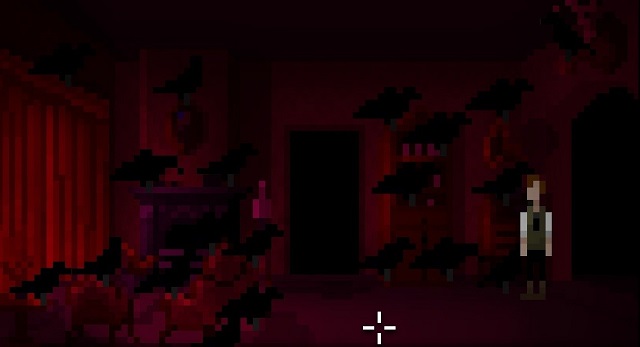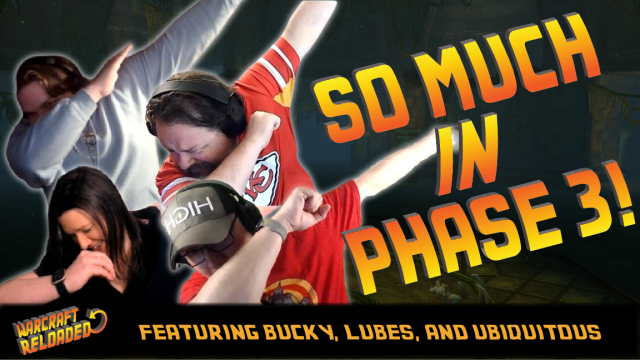I had a really great “I don’t want to go in there” moment while playing the first chapter, Memories, of The Last Door. It’s one of those rare, perfect moments in a horror game where you just look down a hallway or in a doorway and think that you might just shut the game off and do something else. No one is going to know you chickened out, right? Despite bearing a similar look to some really old adventure games, the first two chapters of The Last Door were still quite capable of scaring their players, and it really doesn’t hurt that they’re pretty fluid adventure games with some logical puzzles.
The Last Door is a series of games doled out chapter by chapter as the developers, The Game Kitchen, manage to get them crowd funded. It’s a neat system, one that lets the developers work on the game at a manageable pace while breaking their funding needs down into bite-sized chunks. As an added kindness, the games are first made available to people who donate to their campaign for a little bit, then put online to play for free a few months later. It might not have worked quite as well if the people at The Game Kitchen were less skilled at creating cliffhanger endings, though. Not to go into any detail, but both of the available chapters, Memories and The Letter, end in rough spots that left me dying to continue. It’s the sort of thing that really makes me want to play the next chapter, and also makes me want to throw them a few bucks to get that next chapter that much quicker.
They’re pretty good at beginnings as well, as you’ll find out within seconds of beginning Memories. The game starts right off with one of its most interesting, and probably more than a little unsettling, requests of the player. You’re asked to complete an act that made me a little uncomfortable, and it wouldn’t be the first thing I had to do in the game that left me upset or with my stomach churning. While it’s not quite at the same level as The Cat Lady in its level of gruesomeness, some of the acts you have to carry out are morally questionable, and may leave you feeling pretty awful. It’s especially bad in a few places if you’re an animal lover.

I felt this was an interesting shift in the genre, as I’m used to games where my actions are pretty tame and more than a little ridiculous. It seems odd to be fussing around looking for a wrench, key, or something when you’re fighting to save the world. Even though you may be trying to solve a crime or prevent ancient evil from awakening, the actions all seem quite tame or surrounded by weird criteria in most point-and-click adventures. It’s not to say that The Last Door doesn’t have any of that in it, but it’s not made up exclusively of those moments.
Every once in a while, you’ll be expected to do something that, even in fiction, you might not feel entirely comfortable with. I think it’s a great direction for a horror game to take, and one that made the typical, kind of sterile and slow interactions of a point-and-click game have a little more urgency and emotional punch. The Game Kitchen also knew that these sorts of sequences could get overplayed if they put in too many of them, so there are only a very select few over the course of both chapters. Overall, I’m very impressed at how they can just punch me in the emotional gut sometimes with what I had to do.
Part of that effect comes from the excellent sound design. Many of the sound effects have been taken from real-life counterparts when it was possible. You’ll hear birds calling out, footsteps clunking across wooden floors, and coughing within the confines of a decaying hospital. While some of it is jarring and really upsetting (there are a couple of animal cries in the game that literally broke my heart to hear), a lot of it just made the immersion click. Hearing slow footsteps as I tiptoed across a dark floor made the moment drag out, and I kept stopping to make sure the only ones I heard were my own. I don’t know how much effort it took to add little sound effects like that one, but the attention to detail in them made the game seem much more realistic than it could have with the most modern graphics.

The music was really well put together as well. The ambient tracks were nice and subtle, rarely overtaking the sound effects that were strengthening the game’s immersion. The best tunes were the eerie ones that played in many of the game’s more frightening locations, managing to make my moments of creeping dread that much worse than they already were. It also felt very suiting to the 1800’s time period the game was set it, so again, the music worked very well to really bring me into the game.
That being said, Memories would randomize the music that played when you were wandering around the mansion. In theory, it should have given me a false sense that something bad was going to happen when the tense songs played, but instead it just messed around with my tension. The more laid-back tunes would play after I felt I had a reason to be scared, and it would calm me down, dissipating the atmosphere they’d worked to build up. A few places had specific music for them and I found those were the most effective, so I’m glad they tossed the whole randomized music thing after this chapter and had all the music appear in specific places in The Letter. It was an odd misstep that they’ve moved past, but it may dampen some of your journey through the first chapter.
The game is a bit limited with its pixel art. It’s a step back from the more detailed work of games like Lone Survivor, moving further back into the realm of 80’s adventure games. There were more than a few scenes where I found myself looking at something completely serious being shown in those graphics and felt like the leaps my imagination had to take were a little too much, but the game often surprised me with how well it could communicate atmosphere with its limited graphical power. The opening part of The Letter managed to convey quite a bit of dread, as did the hallway from the first chapter that scared me every time I went down it. The graphics can be quite limited, but areas like those use the limitations to their advantage.

Clever use of the limited graphics resulted in me wondering if I was close to something I should be frightened of. When the game used lots of darkness, I didn’t really know what I was walking past. Given the pixellated look of the game as well, I couldn’t tell what something was based purely on an outline. There was one sequence at the end of The Letter where I had to walk down several dark hallways, many of which were lit up by light pouring in through windows. Often, that light would stream past some shape in the window, one I had to walk pretty close to in order to get by. Do you think I wanted to be anywhere near any of those shapes? Given the limitations of the graphics, I really didn’t know what those outlines could be, whether trees or creatures, and it made every step through that sequence terrifying. It was smart design, and The Game Kitchen should be proud of it.
As for the puzzles, Memories showed some of the best puzzle design I’ve seen in a point-and-click game, and all without highlighting items or giving a hint system. For starters, the environments aren’t that large, so clicking on everything isn’t all that time-consuming. Also, the limited graphics mean that it’s typically obvious what is different and worth looking at in the environment (except one annoying instance), so what you need to interact with stands out. From there, you need to take a look at an item before you’re given an option to pick it up, forcing the player to interact with the environment in a way that you might seem annoying at first thought. Why not just let players pick up stuff they need?
This is where things get clever. When you look at something, the game tends to give you a tiny hint about its use. Even something as simple as a cloth came with a little blurb about how it was very dirty, something simple that hinted at its eventual use. Each of the game’s items give little hints as to what they’re for, whether you can pick them up or not, and I often found that reading one item’s description would make me think back to a previous thing that had stumped me before. Solving the puzzles felt very organic because of this logic, and I could often recall the place I needed to go to as soon as I was allowed to pick up the item I needed. Being forced to have a reason to pick something up seemed like a hindrance at first, but when I started knowing where I needed to go and what I needed to get, it all felt like it flowed quite naturally. The game integrated a form of a hint system into its item descriptions, something far more elegant than even the best hint systems, and it made the game flow so much nicer because of it.

That’s not to say that it never goes into point-and-click puzzle logic land, though. The Letter was bad for that in a few places, as I needed to cut my way past something to get to the final act. Given that I can walk to my kitchen and get a knife I don’t see why I would have to find a razor in a man’s office and then secure it to a log I found on the beach, but I guess sometimes the lure of the bizarre puzzle is too great. I was particularly annoyed since I was carrying a piece of broken glass at the time, but the item description told me it was too dull to use. The game can be a little more obtuse at times during The Letter than it was in Memories, but I still found its puzzle design was pretty straightforward.
Really, it’s the story that’s kept me playing it. The story currently involves a suicide, a secret club the main character doesn’t remember much of, and several people who seem to be meeting gruesome ends. There is a lot of dark stuff happening in the first two chapters of The Last Door, and during my time with the game those occurrences have only just started to make some kind of sense. Religion and philosophy have been brought into the mix as well, as have some truly deranged people, and it’s all coming together in ways that already have me craving the next small reveal in the plot. I’m already heavily drawn into this, and no matter how dark the path gets I need to see it through to its end. This could be one of the best game storylines I’ve read in a long time, making me even more excited for future chapters.
Despite its graphics, and sometimes because of them, The Last Door is looking like a great horror game. Clever puzzles, good music, better sound effects, and a twisting storyline make this game well worth a horror or point-and-click fan’s time, and it is a far better showing than many games you’d have to pay to play.
The first chapter of The Last Door can be played for free on the developer’s site, and the second chapter can be played by donating to their work on the third chapter.





